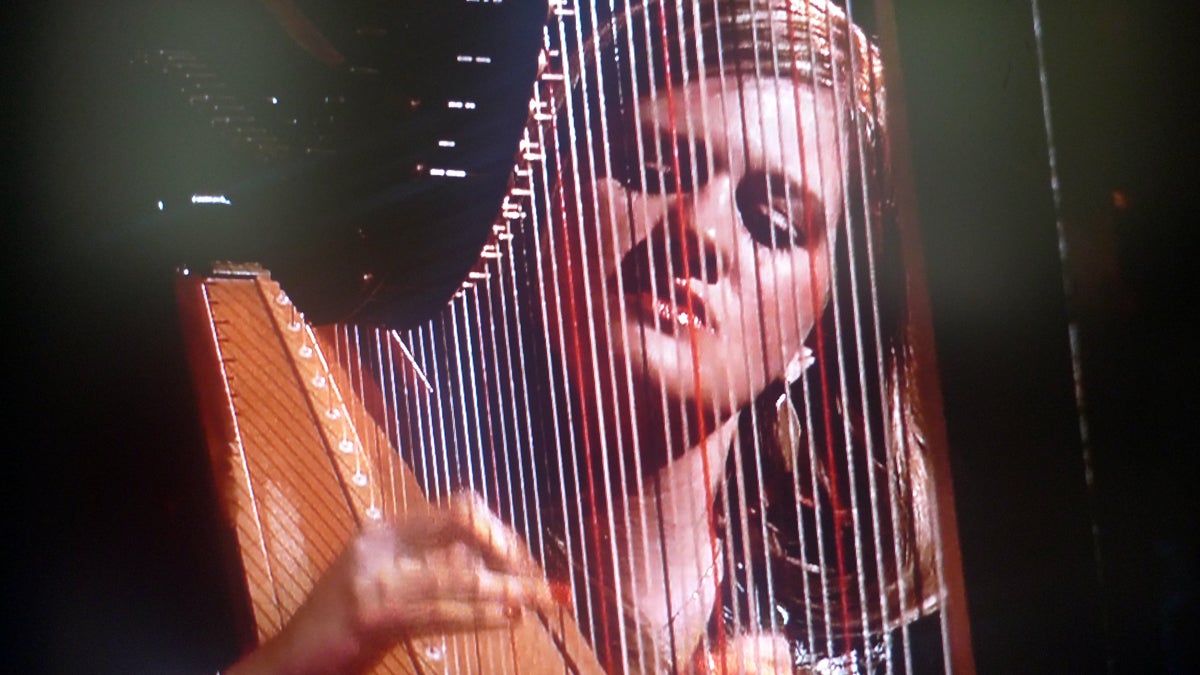Philly’s Mary Lattimore sets the harp on a modern road

Mary Lattimore (marylattimoreharpist.tumblr.com/)
Mary Lattimore is a fascinating artist living in Philadelphia, and one you might not know about. On a road trip to California with her 85-pound harp, she found inspiration from Joan Didion and the Hoover Dam.
On a road trip to California with her 85-pound, 47-string Lyon & Healy harp, Mary Lattimore found it appropriate to read Joan Didion’s “The White Album.” An essay from that book, “At the Dam,” gave her the inspiration for the title of her new five-track LP.
Didion was fascinated by the Hoover Dam’s permanence when she wrote the essay.
“I like the idea of a record that’s going to live for a really long time — something that would outlive me and sort of encapsulate the emotions I was feeling during the recording,” she says.
Didion looks at the dam mechanically, says Lattimore. “She’s really fascinated by the technical aspects of how it works, and then she talks about how it’s going to keep going after everybody’s gone.”
An otherworldly sound brought down to earth
Lattimore is a fascinating artist living in Philadelphia, and one you might not know about. She’s recorded and played with an impressive roster of musicians, local and otherwise. She has an ongoing musical companionship with Jeff Zeigler, Meg Baird, and Kurt Vile, and she’s worked with Thurston Moore, Jarvis Cocker and Sharon Van Etten.
It was winning one of 12 Pew Center Arts & Heritage fellowships (“the greatest moment of my life,” she says) that allowed her to escape her four-job hustle to take the road trip west. She recorded at various stops along the way: Marfa, Texas, Joshua Tree in San Bernadino County, California; and the mountains of Altadena, California, 14 miles from downtown L.A.
The five experimental compositions that emerged are nothing short of breathtaking and gorgeous, with wonderful computerized effects that simultaneously reflect the environment she created them in and a wild and abstract natural beauty.
At Joshua Tree, deep in Southern California, she would wheel her harp out to the porch of her friend’s little house. “I had the whole desert around me,” she says. “It felt like a residency on another planet.”
But the opening tack, “Otis Walks Into the Woods,” doesn’t feel alien at all. It’s downright earthly in its telling of her family’s old, blind dog, who wandered into the North Carolina woods one day long ago to die. The song’s power relocates my imagination to starry nights, hissing insects, cooing frogs and birds, rustling trees.
“Jimmy V” is, believe it or not, a tribute to the late, great Jimmy Valvano. Is it the first harp-based song about a basketball coach? “Probably,” she says with a knowing smile.
These songs are hypnotic. The five- to 13-minute songs seem to pass in a moment. Listening from beginning to end and cycling back to track one without a pause, you might not notice. Yet each song feels distinct.
I suggest to her harp music lends itself to circular sounds, repetition of note runs, and undulating waves of music. “Just experimenting with the effects is really fun for me,” she says. “I like to find those patterns through the machine.The whole record is improvised, so it’s all experimenting with what comes out after I press a button or pull a string.”
Lattimore is a champion of experimentation, both with recordings and with live performances. The guitar you hear on “Jaxine Drive” is hers. She recorded it in Philly upon her return. “I thought it needed a little different sound, so I did that just to see what would happen,” she says.
‘Still some mystery there’
I ask if she’s tired of hearing people compare her to harpist Joanna Newsom.
“No, I’m supportive of her. We were pen pals a while ago when she first started,” Lattimore says. “I feel glad that she’s bringing the harp to a new audience. We have to modernize the instrument.”
Harp music is a slim market share, and she says she likes it that way. “I feel like it’s a special instrument. And it’s fun to play an instrument that still has some magic for people that don’t know how it works. There’s still some mystery there.”
The vibe she reaches for in performance mode isn’t a far stretch from the way she thinks of music-making generally: She calls it an “exorcism” of sorts, “getting everything out.”
“People have been totally quiet and silent [at shows], which is amazing,” she says. “It’s an amazing experience to just feel people being so quiet.”
In performance, she doesn’t always stick to songs she’s recorded, but on Friday night, she’ll celebrate the new record by honoring a few “Dam” songs.
She says she’s not used to being a solo performer. She more often shares the stage with Ziegler or Baird. But she’ll get great support from the formidable band Spacin’ and the New Zealand techno-folk musician Bachelorette.
“And I have a special surprise guest that I’m not allowed to tell. It’s kind of a secret,” says Lattimore. “I’m not totally used to the pressure of entertaining people just myself. I have some really beautiful projections, though. That’ll be something to keep people distracted, something to take the pressure off a bit.”
No pressure. I just hope that the projected images capture the natural beauty that runs through this record and stokes the imagination.
—
Mary Lattimore performs at PhilaMOCA on Saturday at 8:30 p.m.
WHYY is your source for fact-based, in-depth journalism and information. As a nonprofit organization, we rely on financial support from readers like you. Please give today.




